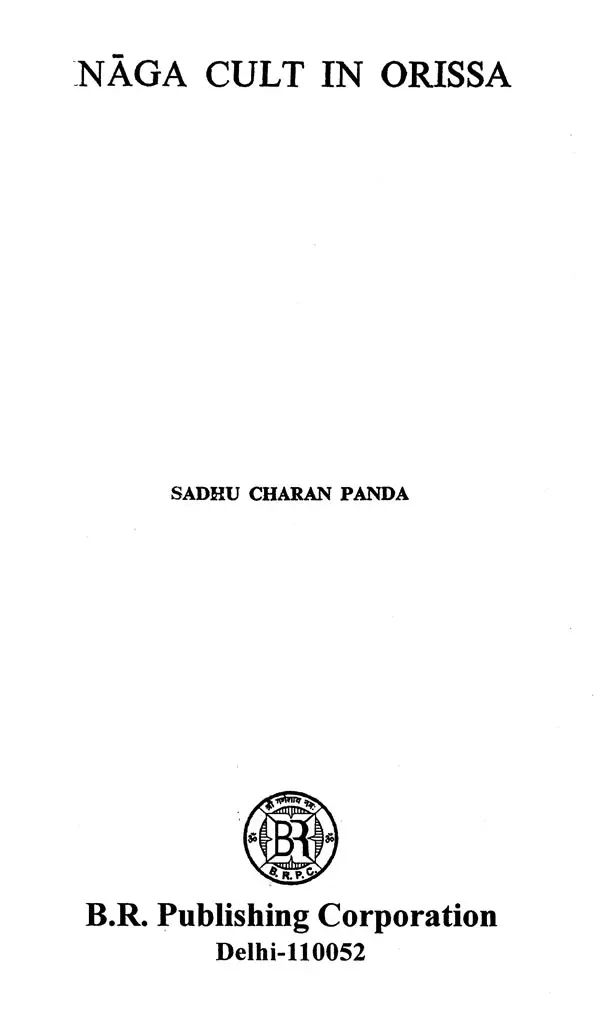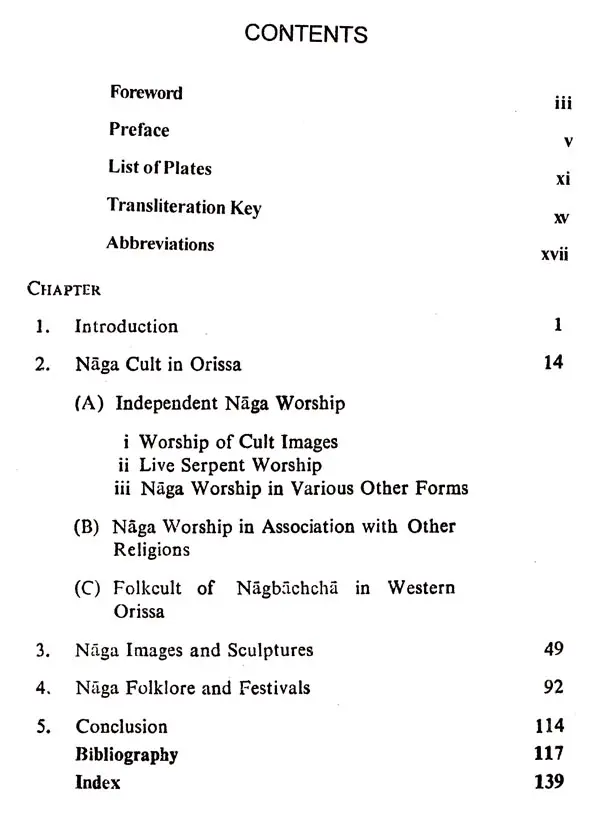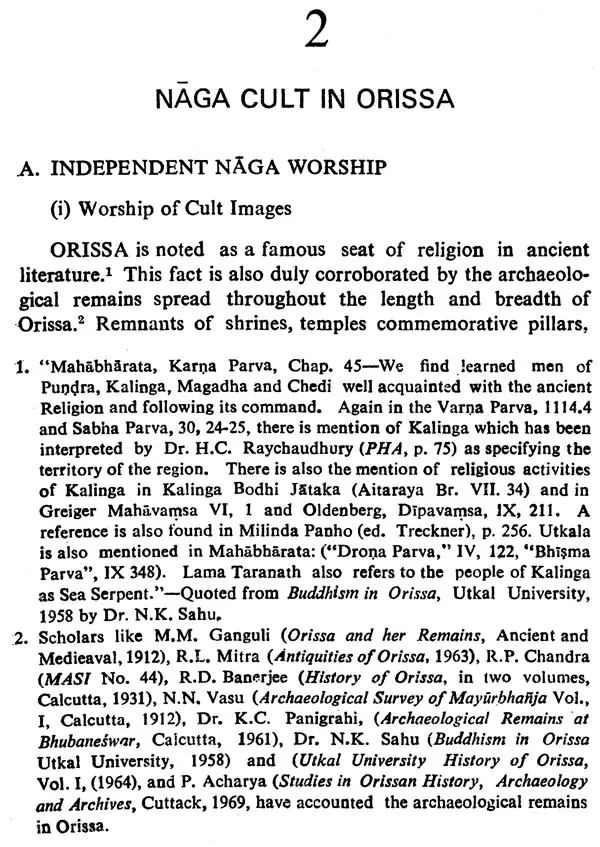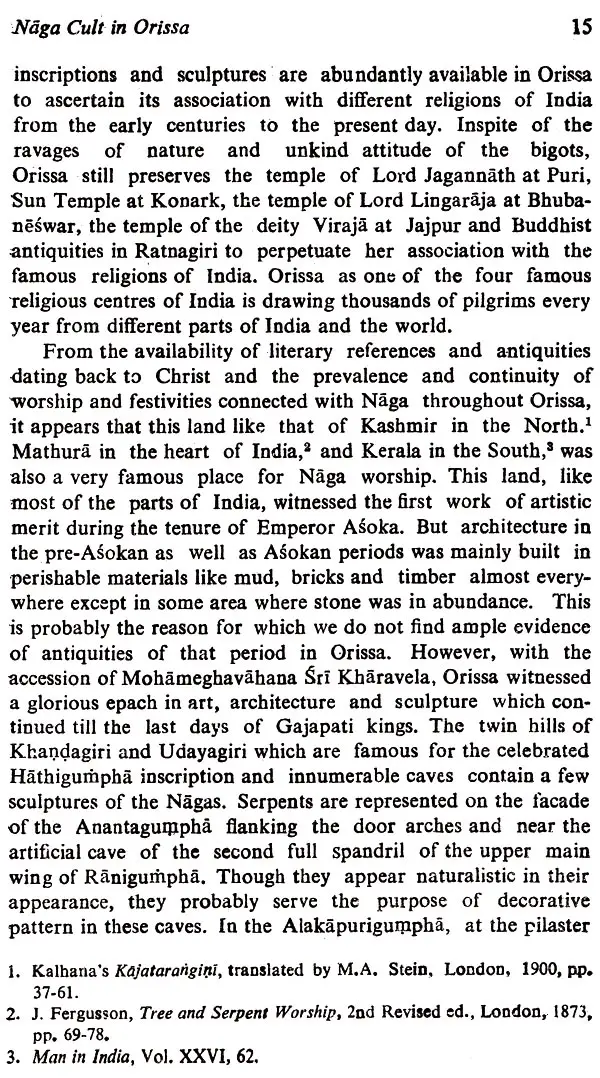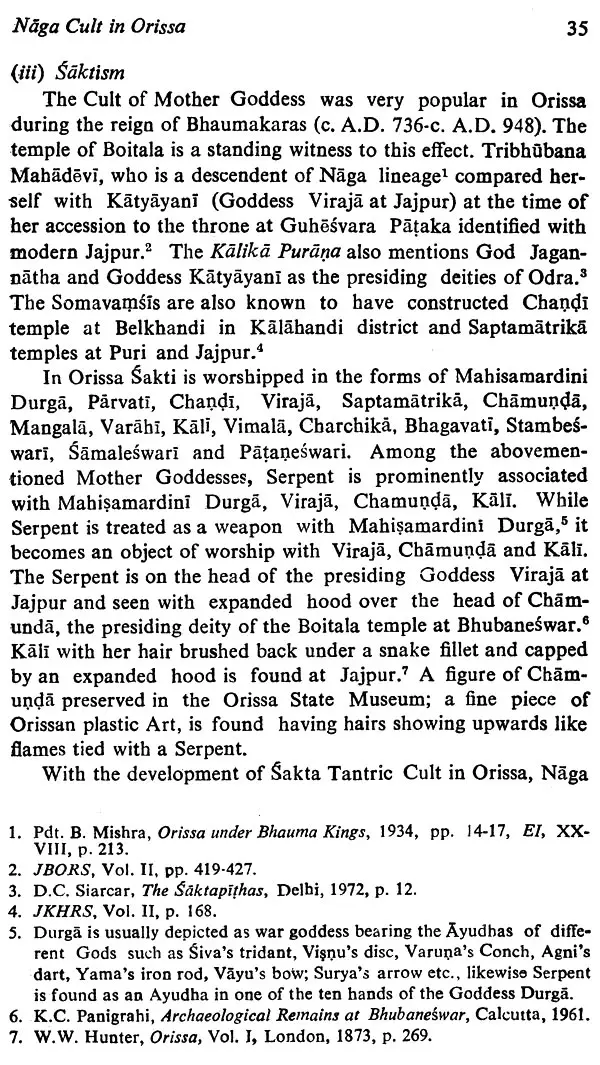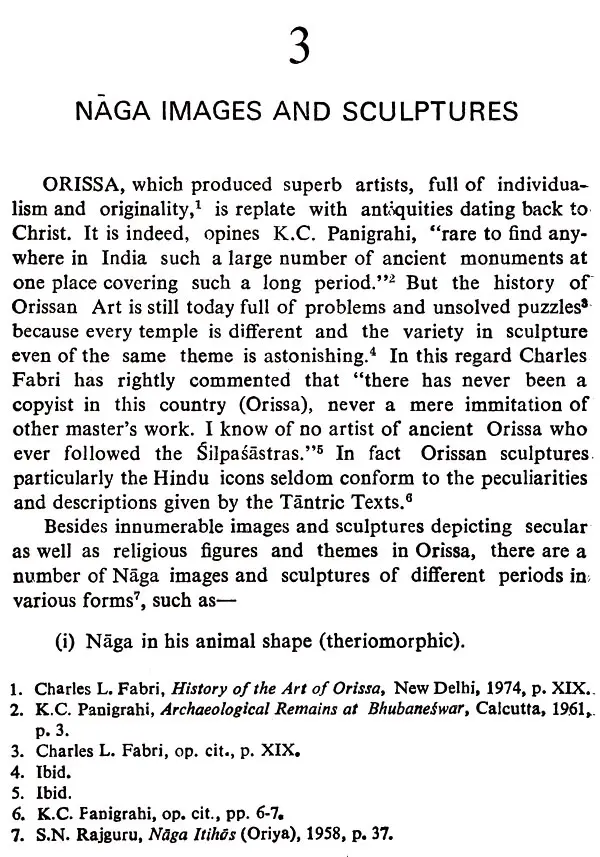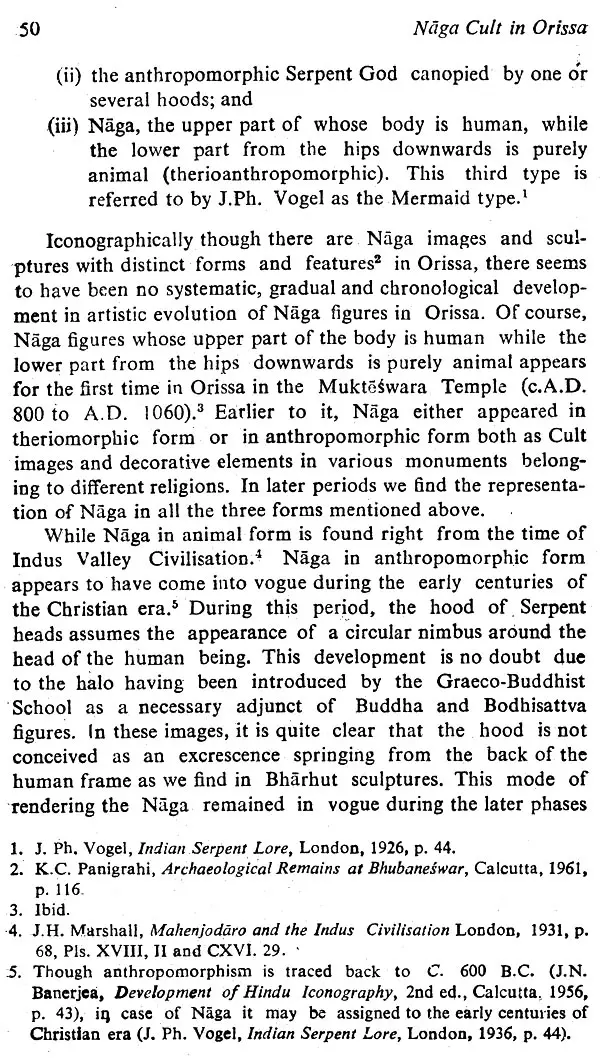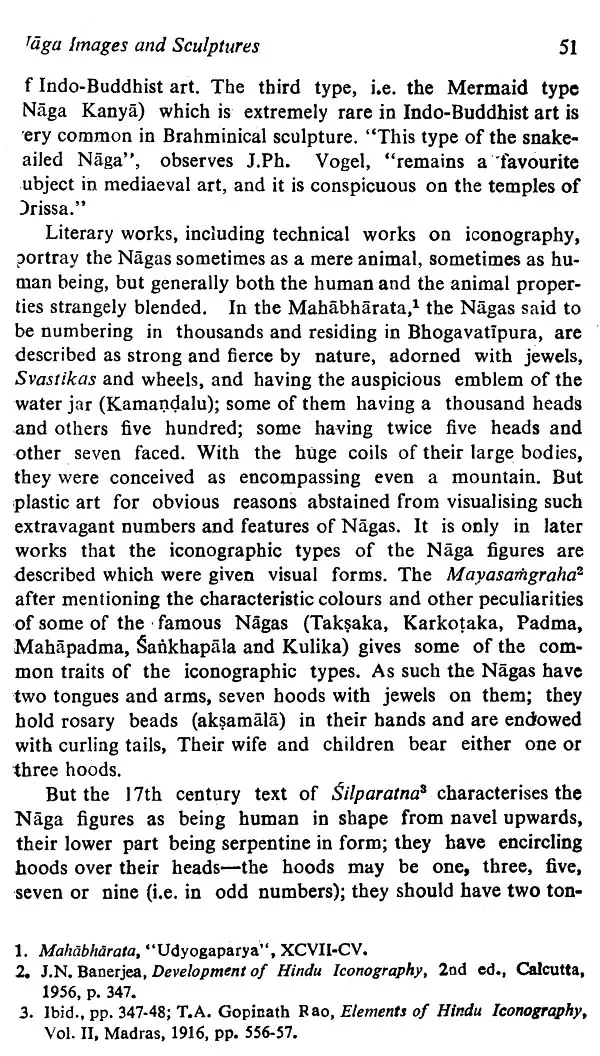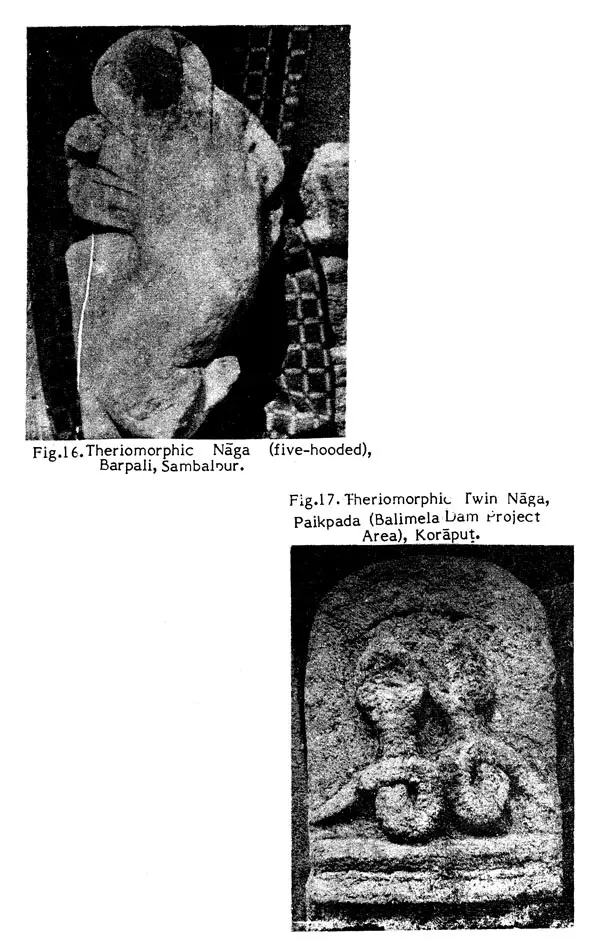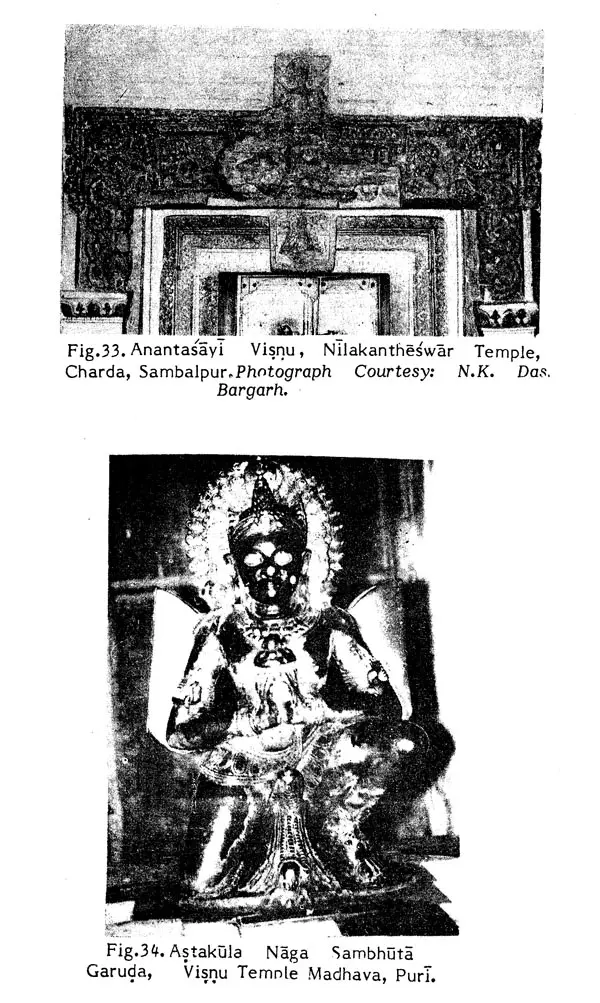
Naga Cult in Orissa
Book Specification
| Item Code: | UAP966 |
| Author: | Sadhu Charan Panda |
| Publisher: | B.R. Publishing Corporation |
| Language: | English |
| Edition: | 2014 |
| ISBN: | 9789350501733 |
| Pages: | 178 (B/W Illustrations) |
| Cover: | HARDCOVER |
| Other Details | 8.50 X 5.50 inch |
| Weight | 350 gm |
Book Description
Serpent worship, popularly referred to in India as the Naga Cult, is perhaps one of the most ancient forms of worship. It is not confined to India alone. Rather, ample evidence of serpent worship is available in different parts of the world. However, the scope and extent of this form of worship assumes special significance in Indian content.
Naga Cult in Orissa is an inter-disciplinary study of this ancient form of worship prevalent in different parts of the world, in general, and the folkcult of Nagbachcha, in particular which is a popular religious creed among the tribals and peasants of rural Orrisa. This study of such a cult of Debahal in Sambalpur district with its rites and rituals demonstrates the social utility of folk practices as reminiscences of age-old and ancient cultural heritage of this land.
The work is replete with a wealth of information on the subject drawing on all kinds of sources archaeological, anthropological, historical, scriptural, literary and general. It is a work of assiduous scholarship and will prove to be of absorbing interest for the readers.
after securing first class first position in B.A. (Hons.) completed his M.A. in Ancient Indian history in 1969 obtaining the University Gold medal for securing first class first position. Since then he has been teaching history to the under graduate and Post-graduate students in Orissa. He took up his training in Research Methodology in 1978 from N.I.C.D., Hyderabad and was awarded the Degree of Doctor of Philosophy in History in 1980. He is associated with learned bodies like the N.S.I., Indian History Congress of Orissa and Folklore Congress of India. Dr. Panda has published a number of research papers apart from presenting papers in national and international seminars.
I have pleasure to certify that Sri Sadhu Charan Panda, Lecturer in the Post Graduate Department of History, Sambalpur University, Sambalpur has completed a scholarly dissertation on Naga Cult in Orissa which is highly interesting and an original work. This is an interdisciplinary study which marks the trend of research in the present time. Such a work is seldom taken up by scholars and it is a credit of Sri Panda that he has shown his ability in ammassing large mass of facts from original sources and field work. The archaeological treatment of the Serpent Cult with its variety of inconographic features along with the ethnographic and sociological treatment of this Cult, represents his painstaking research and scholarly merit. Sri Panda is submitting this dissertation for Ph.D. Degree Examination, for which he prepared for the last two and half years under my guidance and supervision.
Origin and Development of Cult Worship in India.
OUR ancient religious literature which contains countless hymns and verses in praise of higher religious systems seldom refers to the cult worship of the masses. The traits of the culture traced in those texts are those of the culture of the upper classes. Nothing or very little is said on the beliefs, rites, amusements and other aspects of the daily life of the common people. This is because at the 'food producing' stage of culture various objects of nature, such as Sun and Earth were the principal objects of ceremonial worship without any philosophical and ethical meaning attached to them. Because of primitive understanding and ignorance of higher aspects of life, emphasis was naturally laid by them on the practical side of life. This was the reason for which they were swayed by the outer manifestations of natural objects with least botheration to know the inner meaning. It was only after the Aryan efforts to understand the marvels of various objects and phenomena of nature, people slowly became conscious about spiritual, metaphysical, philosophical and ethical aspects of those objects and phenomena of nature. And, it so happened for a time due to the domination of higher religious order, the primitive cult worship seemed almost xtinct. Charles Fabri (with reference to India) puts it very aptly by saying, "the simple folk were reduced to slavery (they were the dasas) and misery by the Brahminical revival for which they even feared to worship openly their beloved little fairies, spirits, nymphs, the Yaksas and Yaksis Nagas and Nagis. But this phase of decline in cult worship seems to have assumed a new lease of life with the beginning of confusion in higher religious order. Due to hard and rigorous monastic life, abstract and high philosophical theories, the adherents of different higher religious orders revolted and became latitudinarians and took refuge in the baser elements of life. This led to the resurgence of ritual cult worship through fairs and festivities by the common folk. In some cases cult rites and performances influenced the decaying higher religious orders and the monastic life began to be shaped accordingly. The Mahayana sect of Buddhism, the Vaisnava and the Saiva sects of Hinduism, the Anglo, sect of Christianism, and many other sects of higher religious orders were moulded with suitable cult rites for popular appeal and following.
**Contents and Sample Pages**
